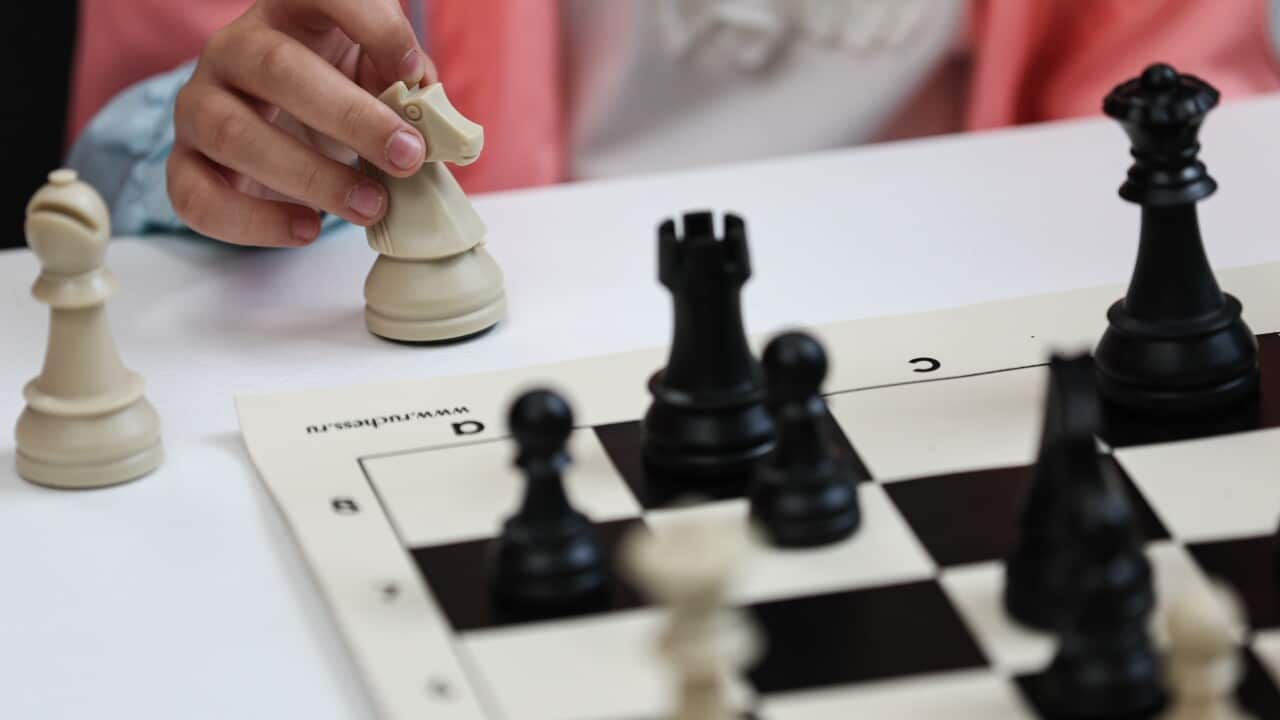Stream free On Demand

The Kids' Gambit
episode • Dateline • Current Affairs • 28m
episode • Dateline • Current Affairs • 28m
It's one of the fastest-growing sports in the world.
Chess, a centuries-old two-player board game, has experienced a massive surge in popularity among youth in recent years thanks to video livestreaming platforms, a Netflix show, and the COVID-19 pandemic.
Chess's popularity started growing in 2020 as more people turned to online gaming during COVID-19 lockdowns.
According to a survey by YouGov, an estimated 605 million adults now play chess on a regular basis.
The hit Netflix hit series The Queen's Gambit was released the same year and led to a massive spike in the game’s popularity, bringing it into the mainstream.
The show was viewed by 62 million households in the first month of its release.
Today, signs of chess obsession are all over the internet.
Last year, Chess.com, the world's largest online chess platform, surpassed 150 million members. The YouTube stream of the FIDE (International Chess Federation) World Cup Final in August last year has been viewed 2.9 million times.
Professional chess players such as American grandmaster Hikaru Nakamura have gripped the attention of millions across the world on Twitch, a game live-streaming platform, and social media.
These platforms are drawing in young viewers while a new generation of young chess players is also rising, with the majority of FIDE’s top 10 female grandmasters aged under 35.

In Australia, chess is especially popular among children from culturally and linguistically diverse backgrounds who see it as a way to connect socially. More than half of the country's 12 chess grandmasters have migrant backgrounds. One of them, Zong-Yuan Zhao, who now coaches Australia's junior team, says girls still face barriers to entering the professional scene. Source: SBS / Dateline
Women in chess
The Queen's Gambit follows the rise of fictional chess prodigy Beth Harmon. In reality, the world of professional chess remains male-dominated.
In 2001, the percentage of internationally rated players that were female stood at just 6 per cent. By 2020, it had risen to 15 per cent.
Of the more than 1,600 international chess grandmasters, only 37 are women.
For female players, gender bias in the professional scene also presents major barriers.
In August 2023, more than 100 women chess players on behalf of the International Chess Federation (FIDE) against sexism and sexual abuse in chess.
"We are proud that more women are playing chess than ever before, and they deserve a safe and respectful environment," the statement read.
At a junior level, the priority is keeping girls engaged and participating in international competitions.

16-year-old chess player Chao Xin Cheng is one of few girls representing Australia on the international stage. Source: SBS / Dateline
While the tournament mandated there was at least one girl on each team, the majority of girls at the tournament were often relegated to the boards reserved for lower-ranked players.
"Girls tend to be lower rated than boys because a lot of boys like to play chess," says Chao Xin.
"I guess it kind of makes girls feel like [that] boys are better or they feel out of place," she told SBS Dateline.
"When you get older, a lot of girls will stop playing chess because the number of girls that play chess is decreasing and then that's why the boys are better."
Australian junior team coach Zong-Yuan Zhao admits there are still major barriers for girls looking to enter the professional scene.
"There's a big disparity in the prize money on the professional circuits. So that's something that chess has to hopefully change, like tennis," he said.
"I think there's a lot of work that needs to be done there."
However, Zhao says having girls like Chao Xin representing Australia is an important step for tipping the scales.
"I think [it's] a very, very healthy sign that in fact Australia [has] a few girls who are willing to play together."













